Interview with Chris Nicolella
An interview with former Senior Game Producer at Tiger Electronics/Hasbro Toys who worked on the original Pokédex toy.
We are thrilled to interview Chris Nicolella, former Senior Game Producer at Tiger Electronics/Hasbro Toys between 1997 - 2001, who has launched over 200 licensed and original toy and video game products over his career. Chris has worked on several licensed Pokémon items such as the Pokémon Thunder Shock Challenge Pinball Game, the Pokémon Poke Ball Game, and the original Pokédex toy. He also developed the follow-up to the Pokédex called the Pokédex Deluxe, which included Pokémon from the second generation Pokémon games.
Chris, it’s fantastic to be speaking to you. Could you please introduce yourself to our readers, and your background with the Pokémon licence?
Chris:
Sure my name is Chris Nicolella and I’ve worked in the toy industry for 25+ years. I started my career working for Tiger Electronics/Hasbro from 97-2001 [and] continued to consult with them for a few years after that. From 2005 until 2010 I was a Director of Product development at Zizzle toys which was a private toy company founded from many of [my] old toy colleagues from my days working at Tiger and Hasbro. I took a little time off from toys but then in 2014-2018 I worked at Creata in the retail toy division which was responsible for the toy development for [the] Skylanders video game and I developed all the retail Killer Instinct action figure line. Currently I continue to work on toy consulting while living in Bangkok Thailand.
The story of getting the Pokémon License was very interesting and I remember it very well. It was spring of 1998 and Tiger Electronics was acquired by Hasbro which is how I became a Hasbro employee and we were rewarded the license for toy development. To be completely honest, at the time I didn’t know much about the game at all but I did hear about the cartoon from the “Pokémon Shock” episode where it reportedly caused some viewers to have seizures. Now at the same time we were also awarded the rights to the upcoming Star Wars movies (Episode I, II, III). I was very excited to work [on] Star Wars toy development and didn’t know or think a Japanese game and cartoon would translate well to the US market.
At Tiger I worked on handheld games and anything electronic with an LCD screen, sound effects, and any new toy tech that was coming into the market. I thought my focus was going to be on the new Star Wars movies and not Pokémon. That changed very quickly when the owner of Tiger Electronics personally walked to my area and said to me, (and I’ll never forget this) he said “Chris, I want you to focus more of your efforts and ideas on Pokémon and not Star Wars. I think Pokémon will be a bigger toy brand than Star Wars.” I said OK but thought he was crazy. There was no way Star Wars, a brand that has been around 20 plus years, was going to be less successful than a Japanese Gameboy and cartoon that no one (at the time) had ever heard of. Boy, was I wrong and I guess that’s why he was the owner of Tiger Electronics and I wasn’t haha.
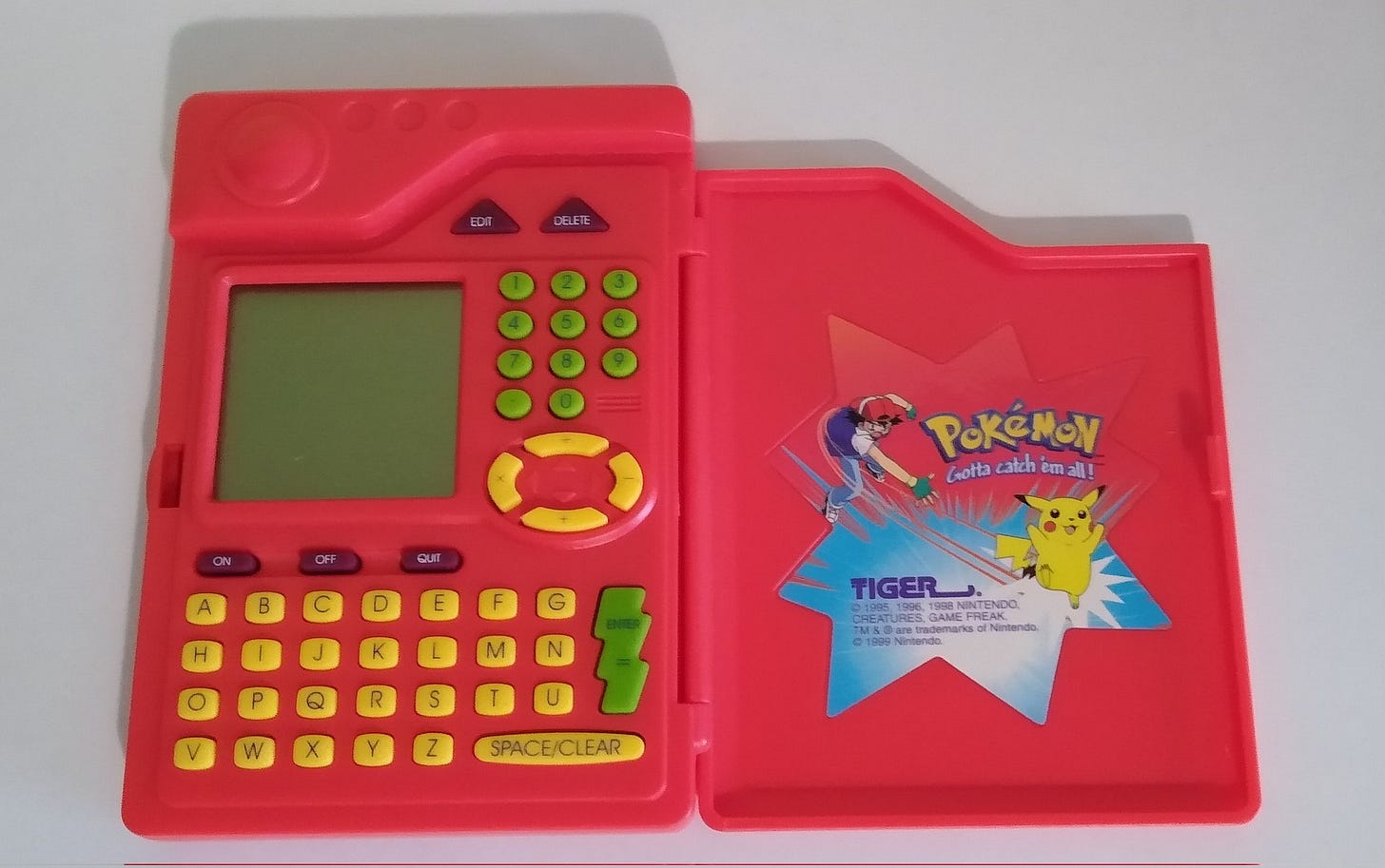
You are responsible for bringing over 200 licensed and original toy and video game products to market. That’s an amazing achievement! Can you tell us about your journey leading up to working in the toy industry at Tiger Electronics and Hasbro Toys?
Chris:
I started my career actually in video games at the age of 18. NEC had their headquarters in my hometown. NEC in [the] early 90’s made the video game system Turbo Grafx16. I worked there as a game counselor on phone lines helping gamers get past areas in TG16 games they couldn’t beat. It was an amazing job but TG16 didn’t perform very well so I was only with the company for 3 years before they closed their doors. After that I worked at Electronic Gaming Monthly (EGM) as a Game Editor. Next I worked at GamePro which was the biggest video game magazine in the early to mid 90’s as the Arcade and Fighting Game Editor. I wrote under the pen name persona Bruised Lee.
Shortly after that I wanted to do more than write about other people's work so a friend of mine knew the owner at Tiger Electronics and passed my details to them. I was lucky enough to get hired and started working at Tiger Electronics in spring of 1997 as a toy project manager. The first toy line I worked on was GigaPets which sold over 10 million units worldwide.
Obviously, we are keen to hear about one specific franchise in particular that you worked on: Pokémon! One of the products you were involved in was the original Pokédex, which I know was very popular with Pokémon fans of that era, myself included. We would be very interested to hear how the product came to be, and learn more about its development!
Chris:
The process was very difficult from several aspects. While we were awarded the Pokémon license, we didn’t get much help at all from Nintendo of Japan (NOJ). In fact, they didn’t like us very much and didn’t see our value in expanding the Pokémon brand into the toy market. They felt [that] our toy product line would take away sales from the Game Boy game which wasn’t the case at all. The next problem I had was the lack of assets and licensing material they were willing to give us to study.
We needed these materials to help create fun toys, come up with gameplay ideas, rules and features. We also had a lack of style guide assets for character art and colors to use. We very much need these assets to make the best toys possible. At first all I had were a few videotapes of the cartoon show (in the Japanese language only) so I had no idea what was going on in the show. I had some basic descriptions but that was it. I watched the shows over and over to try and understand the basics. I knew Ash and Pikachu were the heroes, [in] each episode he used his Pokédex, a Pokéball, and they were trying to capture more Pokémon.
I focused on the Pokédex because it looked cool and it was in every episode. I finally did get a basic data sheet on each of the original 151 Pokémon so that helped a lot [with] bio information. We were strictly forbidden to have any type of graphic game function because of the Game Boy game. I wanted to at least have an image of each Pokémon just to give it some fun visuals as opposed to just a complete text-based toy. So, I had my art team come up with a simple 2 frame animation of each of the 151 Pokemon characters. That turned out to be a big mistake and almost killed the entire toy. When NOJ saw the screen animations they freaked out and said we couldn’t do that and it was too close to the Game Boy game. We disagreed and said the toy needed it [but] NOJ would not let us move forward. We did have Nintendo of America (NOA) and the licensing group 4Kids Production on our side but it was Nintendo of Japan that [got] the final call on everything and final approval. For almost 6 months the project was put on hold. I was so frustrated I didn’t even want to work on it anymore and wanted to get back to working on Star Wars toys. Finally, we had a big meeting with all licensing parties involved, myself and our owner of Tiger in the meeting. The meeting did get a little heated but we finally came up with a solution. We had to again promise there was not [a] game element in the Pokedex and the 2 frame animations of each Pokémon needed to be removed and a senior art manager from [the] Japan Pokémon art team had to design each [Pokémon] graphic image for us.
We agreed and got back on track with development but we then needed [to ship the] first major orders of the Pokedex to retailers because we lost so many months of product development. In the end the Pokedex did make it to retail shelves in time for the fall holiday season but it came so [close] to being canceled.
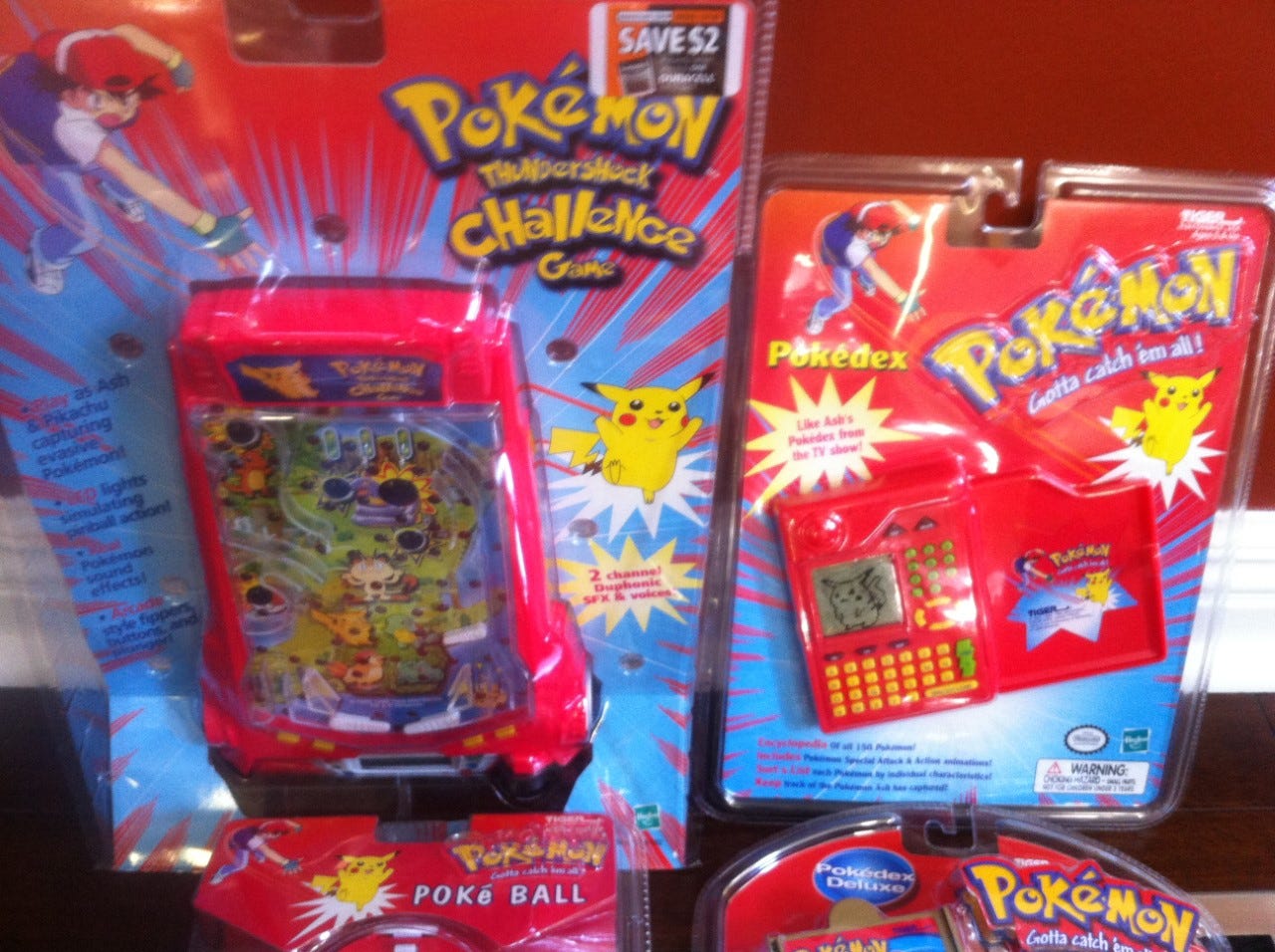
Can you give us an insight into what it was like to bring the Pokédex to market?
Chris:
If it wasn’t for all the hard work from Nintendo of America, the licensing company 4Kids Productions, and our Tiger Electronics upper management team, the Pokédex might have never happened. Once it did hit the market it exploded. I’ve been lucky to work on a few very successful toy lines but this one was different. My first clue was when I was getting calls from other departments within Hasbro asking if I can get them a Pokédex for their kids before Christmas and they were willing to trade me any of the toy brands they were working on. Then I started getting calls from friends and old classmates I hadn’t talked to in years asking me about it and if I could get them one. The Pokédex was selling faster than we were able to manufacture it.
The biggest shock I got was when I got a new toy testing emulator to retest the game with a new IC computer chip that runs all coded text and graphic data. I called my engineer in Hong Kong and asked why am I testing the Pokedex again with a new chip since we are already in production. My engineer said we had to switch chips because the current chip and the chip supplier we were using was now out of stock because of the Pokédex. That was so shocking to me but also exciting that the Pokédex toy was selling that well. I never expected it to be so successful and loved by so many. I was only 26 when I made the Pokédex so when I meet someone around 15 or 20 years younger than me, I often hear how much it was their favorite toy as a kid and they played with it all the time. It’s a pretty cool feeling and when I tell them I made the Pokédex their reaction is very entertaining.
You kindly shared some photographs with us, including a prototype: the “Gold Vac-Metal Pokedex”, which was never released at retail. What can you tell us about this product?
Chris:
Most electronic toys only have a retail shelf life [of] about 1 or 2 years and as a way to keep sales going and interest [high], we were looking into releasing a limited version of the Pokédex with vac metal plating. The vac metal plating was so cool looking and we knew it would help drive interest and sales up again but the cost for vac metal was very expensive and the plating could easily scratch or chip off, so unfortunately, we decided not to release it. The prototypes you see in the pictures are the only ones to exist. They are now in my personal toy collection. Once we canceled the vac metal version, I then started development on the Pokédex Deluxe which had standard gold paint, different cabinet design, more memory, better screen graphics and included the next wave of 250 Pokémon. The Pokédex Deluxe sold ok but the original outsold it 10 to 1.

Speaking of prototype toys, we want to ask about a couple of Pokémon products that didn't make it to market: Interactive Pikachu and Interactive Meowth. According to a toy fair catalogue by Tiger Electronics back in the year 2000, both the Interactive Pikachu and Meowth would have animated ears, eyes, mouths and tails, with a vocabulary of more than 150 words. It would communicate with other interactive Pokémon characters, and be trained to respond to its owner's voice. Can you tell us more about these products that never came to be?
Chris:
I did not work on those projects but I knew the team that did. During that time, they were trying to take a lot of the smart tech that was in Furby and apply it to Pokémon but with additional smart tech features. There were some hardware and software issues with the new tech and while I don’t know exactly why it was canceled, I can tell you this. Toys that are in development for a long time and don’t make it to retail usually get canceled for the following reasons. The biggest is the cost, if the cost to make it is more than the retailers want to sell it for, that is an issue. Another issue might be based on the delays of the project itself. Retailers only have so much room on shelves and if your toy is delayed by several months the Retailers need to fill that space with something else. Thus, you might never get your chance again with that retailer for that toy. Those are the big factors for a toy getting canceled, at least from [my] toy development experience.
You also worked on some other licensed Pokémon toys, such as the Pokémon Thunder Shock Challenge Pinball Game and the Pokémon Poké Ball Game. What can you tell us about the development of these products?
Chris:
To be honest the Thunder Shock Challenge Pinball is my favorite out of the bunch. It was the one toy I was allowed to be completely creative and design a true gameplay toy experience based on the show. Also, the tech and features we used in the toy were ahead of its time. The Pinball featured LED lights as the travel surface for the simulated ball movement, a working plunger and 3 flippers. Again the LED light pinball physics were great and you felt like you were playing real pinball. You were able to lock a ball, get multi-ball and featured the music and sounds from the show. I designed the game with a gameplay mission playing as Ash and Pikachu trying to capture other Pokémon on the loose and you even had a final battle. The pinball also featured an LCD screen to keep track of your current and high score. The Thunder Shock Challenge Pinball game didn’t sell very well because of the price and it also needed 3C batteries which were also expensive to buy, but it was such a great toy. The Poké Ball Game was limited on what gameplay and features since it did feature graphics of the Pokémon characters. We used LED lights as a tracking system to try and capture loose Pokemon. I wanted to include motion controls or a basic accelerometer to add to the gameplay but these features would have added a lot of costs which we couldn’t afford based on the target retail we were trying to meet.
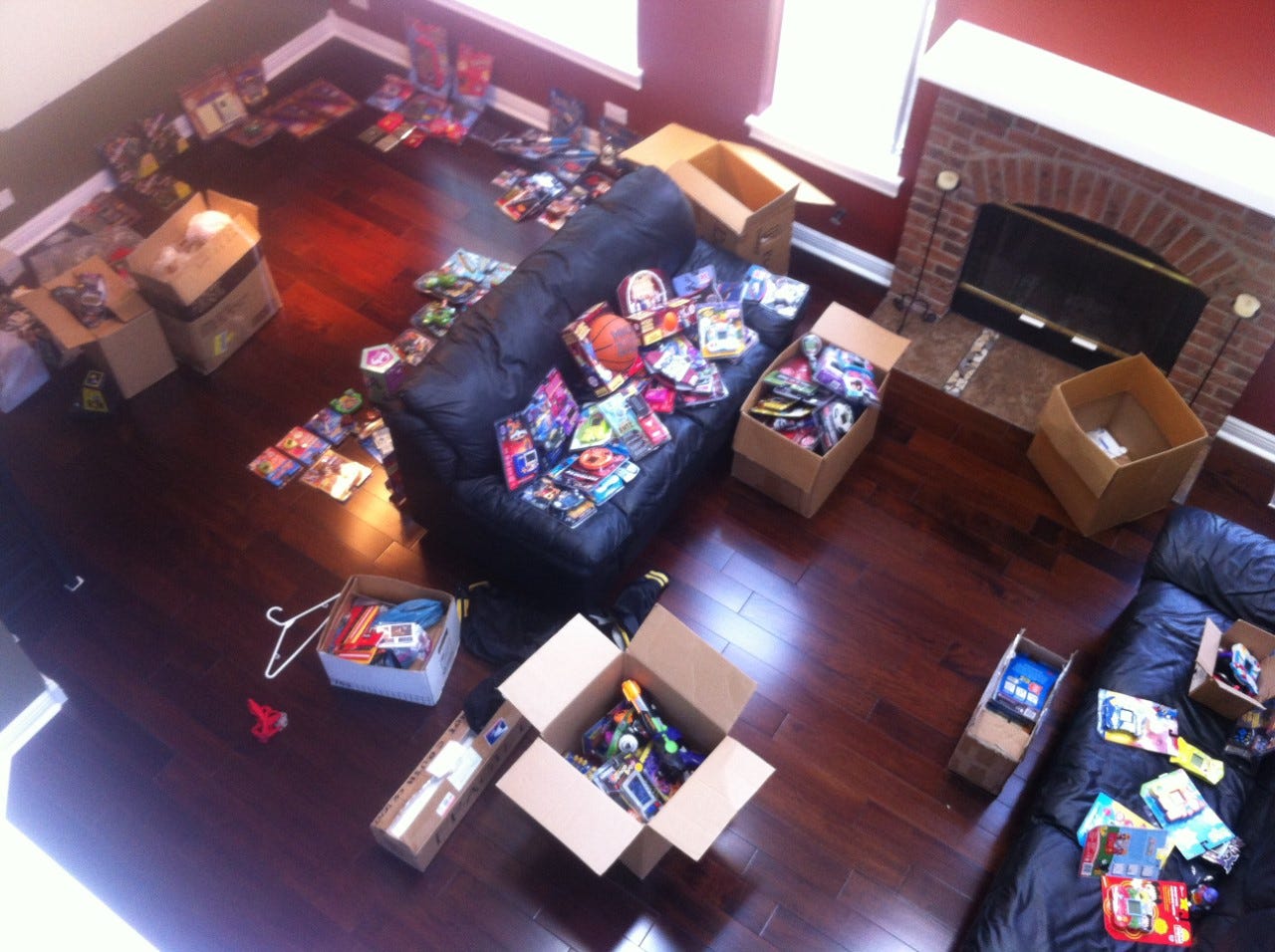
Were there any other prototypes that were developed for Pokémon that didn’t make it to market that you can share with us?
Chris:
None that I can remember. I’m sure we worked on a few other concepts but I don’t think they made it past the 2D concept art development. For the year one line we were very much under a tight schedule to get the toys released on time for the big North America release of the game and show.
Throughout your career, you have worked with many other significant brands such as Star Wars, Marvel, Harry Potter and Furby. Out of all of them, which ones have been your favourite to work with, and why?
Chris:
That is a hard question. I was very lucky to work on so many amazing licenses along with some of the best-selling toys of all time. However, if I had to pick one (and it’s very obscure) it would be the Men In Black II Alien Identifier. Often movie studios would give us scripts to read months before they even started filming to see if we wanted to license the movie for a toy line. With MIB II the studio asked if we could think of a cool toy idea, and if they liked it, they would put it into the movie to help with the sale of the toy. So, I came up with the idea/item the MIB could use to help identify aliens hiding in human form. The studio loved the idea and added it to the script. There are 2 scenes in the movie where Will Smith is using it. The first and the biggest scene is in the post office mailroom where Will is using it and talking to the rapper Biz Markie. So this scene and the technology item he is using only exists because I was lucky enough to come up with the idea and the studio approved and added it to the movie. Now the MIB II Alien Identifier didn’t sell well but being able [to] come up with an idea and [see it] used in a movie was a pretty top tier moment in my toy career.
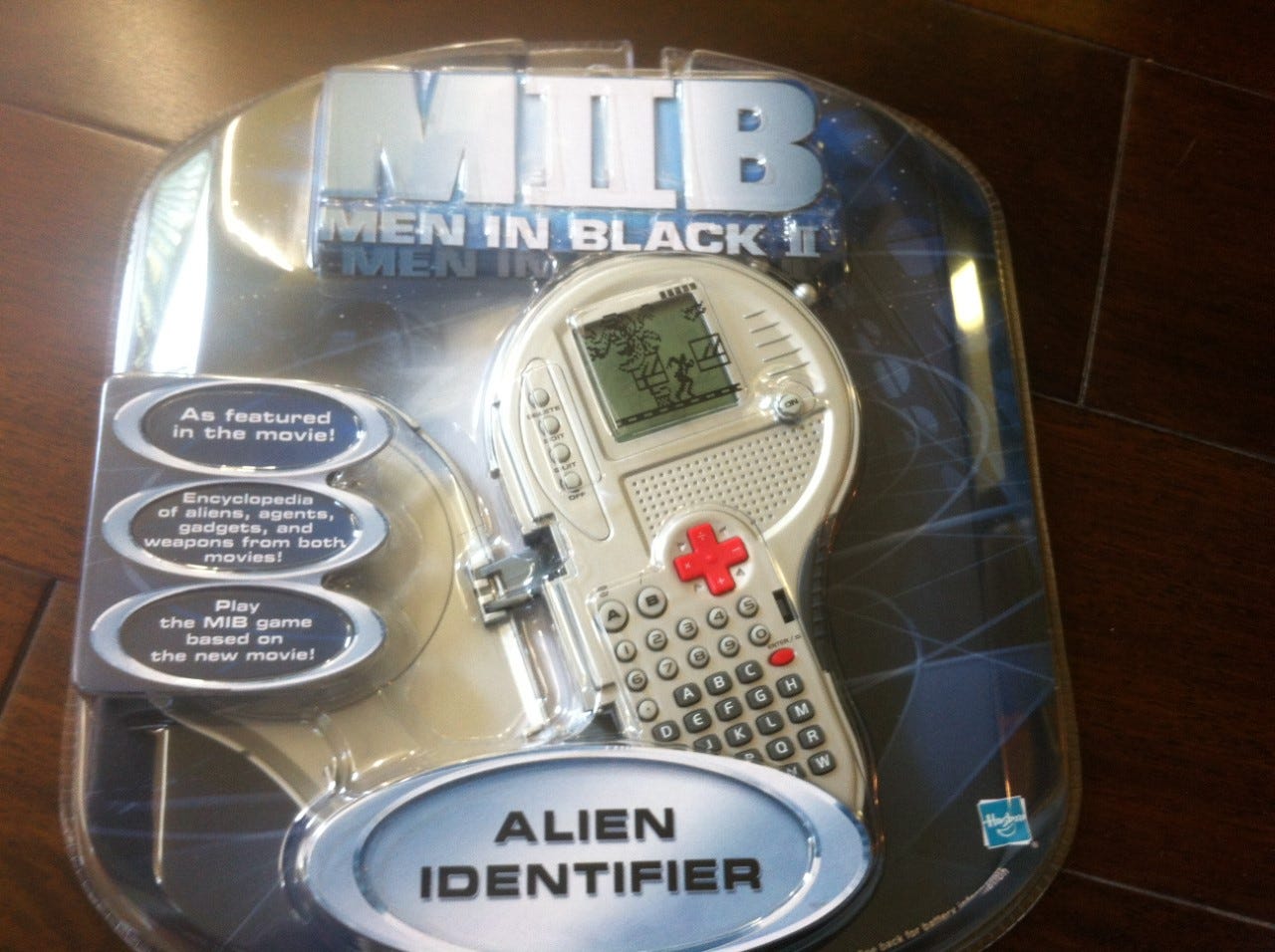
What are your thoughts on any of the licensed Pokémon toys that have been released since your days at Tiger/Hasbro?
Chris:
Well after the success of my Pokémon toy line things got a little political. Other departments wanted to work on the Pokémon line which meant I was given less products to develop. I was known as the Pokédex guy but not really given the chance to work on more out of the box toy ideas. It was a little disheartening and then other departments had less gameplay licensing restrictions which was also a surprise but I [was] happy they were able to make more engaging toys based on the game and TV show. It kinda felt like a breakup and to deal with that I stopped following the continued work on the Pokémon toy license. It was great to be one of the first to develop one of the most successful Pokémon toy lines to ever exist, and I’m forever grateful. It's funny because I didn’t know [at] the time it was going to be successful. I was just trying to work on a cool toy line, make it fun and engaging, follow the license brand as closely as possible, and ship the product on time. Things were moving so fast I often overlooked the bigger picture, to be a part of history and design something that will hopefully give kids joy and a cool childhood memory.
Since leaving Tiger/Hasbro, you've continued to work in the toy and gaming industry, involved in handheld gaming, headsets, interactive plush toys, and you became an Official Apple developer to design iPad/iPhone applications. How have things been since those days?
Chris:
Nothing and I mean nothing will ever come close to working on toys in the 90’s, it was the last golden era of the toy industry. The business has changed so much over the years. Toy retail space has gotten smaller and kids are outgrowing toys at a much faster pace. A big part of this is because of video games and smart phones. It's hard to make a compelling toy under a twenty-dollar retail [price] when they can just download an app or play a free game on a 1,000 dollar mobile phone. I still get to be creative, work on fun concepts and toy lines, but it’s hard to compare it to the good old days.
Chris, thank you for taking the time to speak with us, and for your contribution to several memorable Pokémon toys from our childhoods. Do you have any closing comments you would like to make?
Chris:
The toy industry is amazing and now with so much advanced technology at our fingertips it [is] easier than ever to get into it. You have 3D printers and access to custom component parts you can order online. If you have an idea it's not that hard or very expensive to make something you are passionate about, market it with social media, and then sell it online. That’s what I tell anyone who is interested [in] getting into the toy industry. For me I’ve always tried to surround myself with people that are smarter than me to help challenge myself. I’m still a gamer and try to keep up with the latest market trends. This helps me day to day with new toy concepts. It's crazy to think the very first toy line I ever worked on was GigaPets back in 1997 and then 20 years later (in 2018) I was asked to work on them again for a relaunch. I was so excited and I've been working on the relaunch of GigaPets for the past 5 years now. I just think that is so cool so it's also very important to build great relationships within the industry [where] you work. I also can’t thank enough the many people I’ve worked with over the years that gave me so many opportunities to work on some of the biggest toy lines and licenses.
Here are some more photographs Chris kindly provided, showing some of the awesome toys he worked on throughout his career:
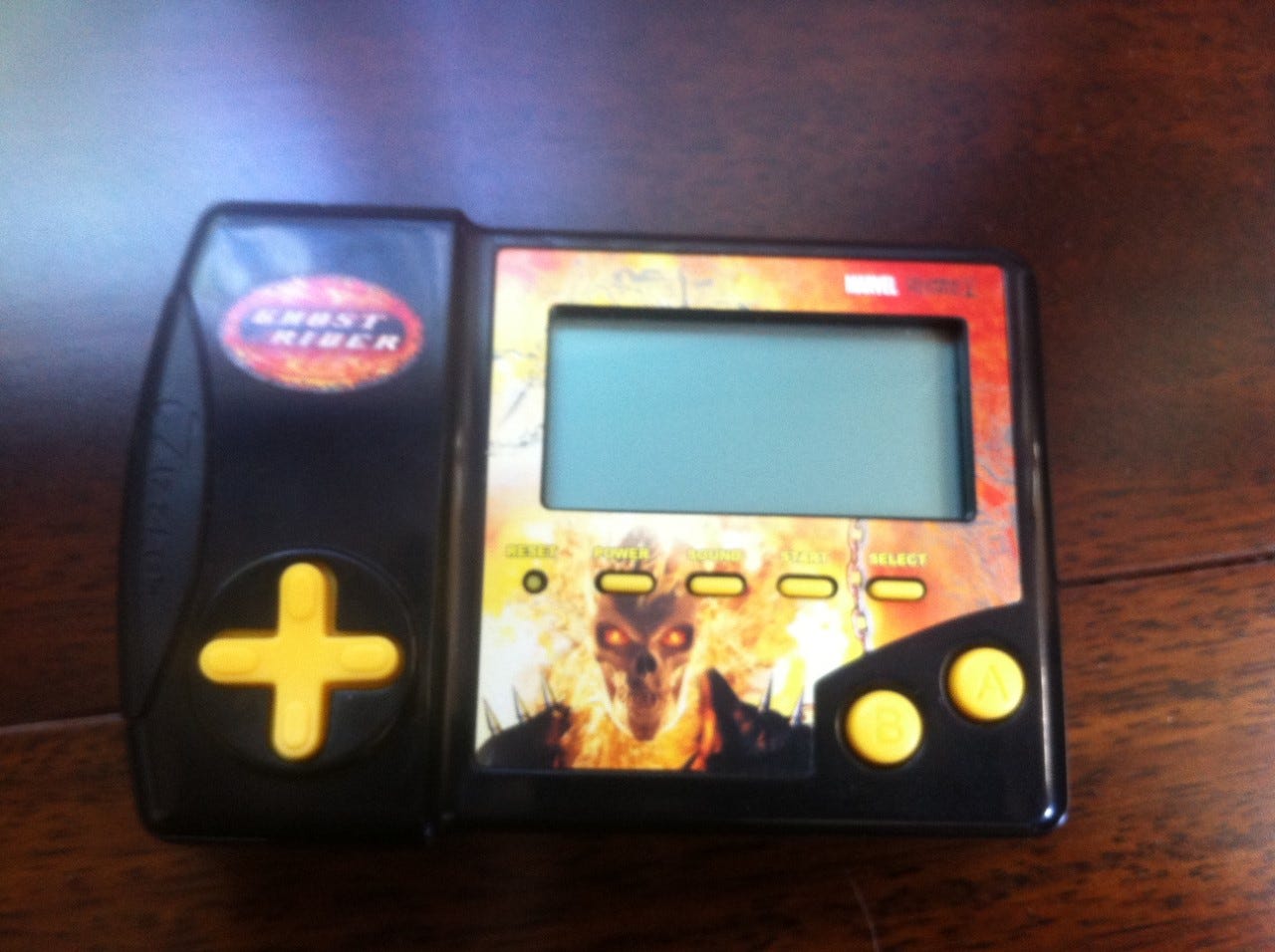
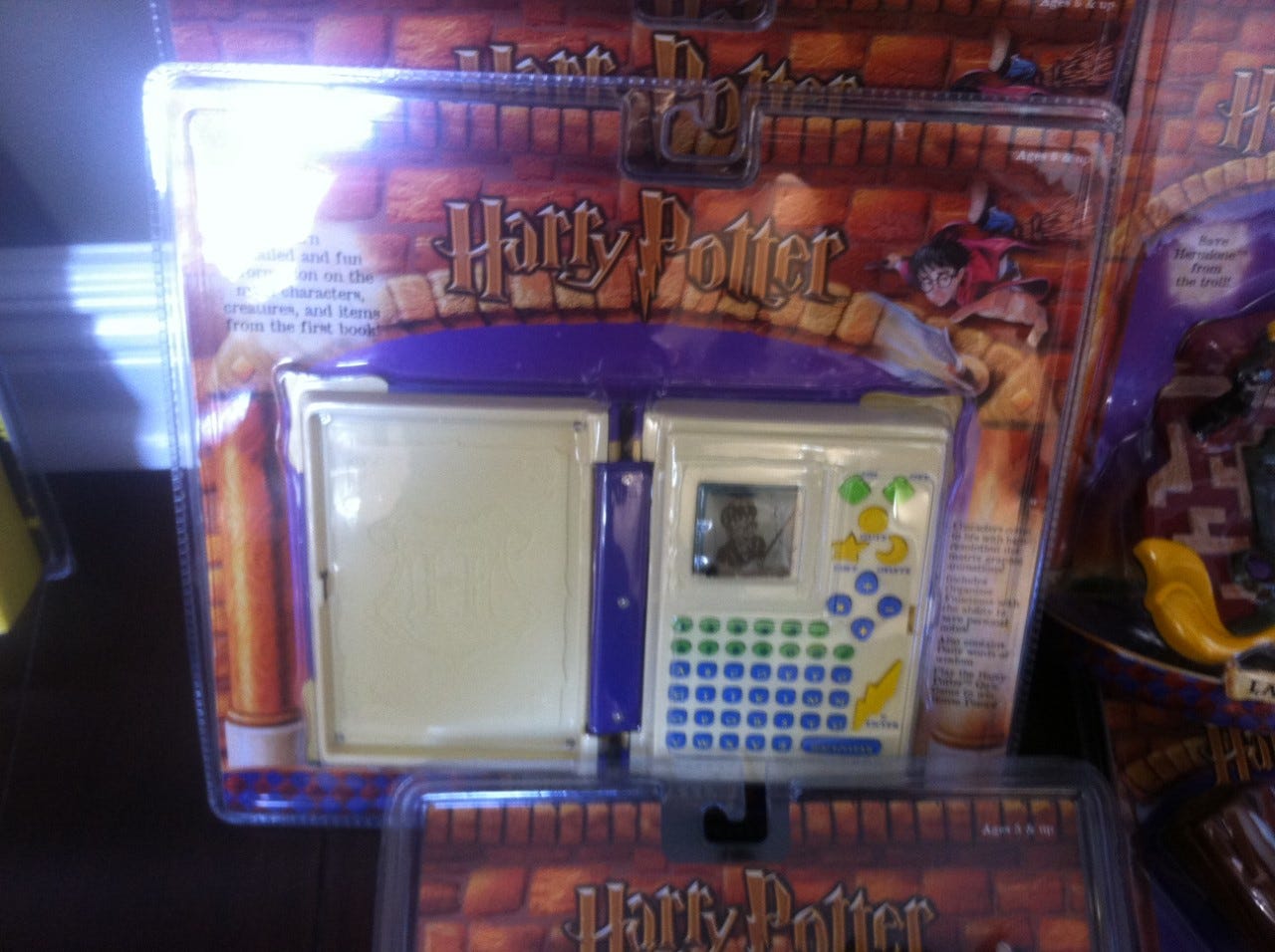
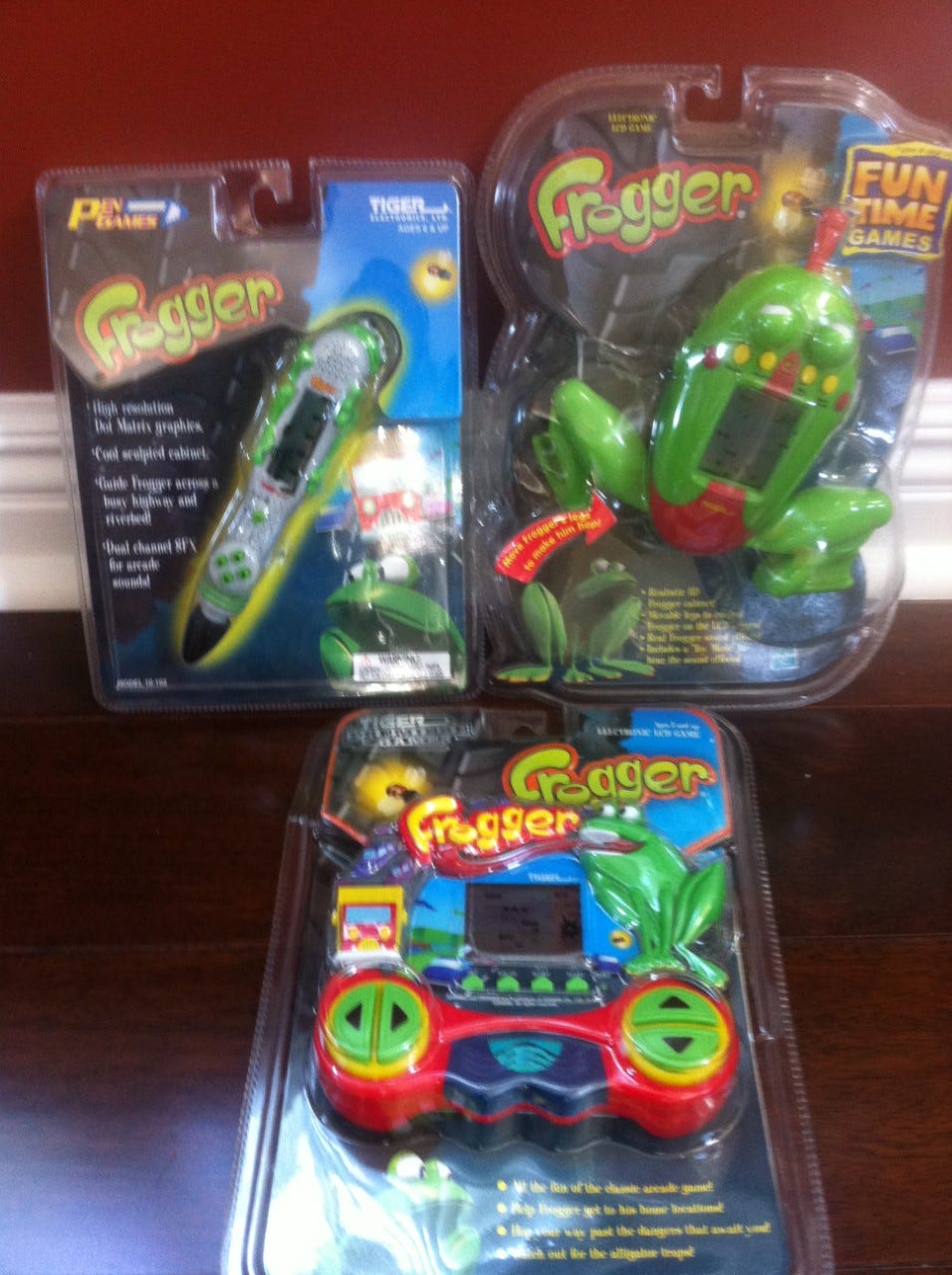
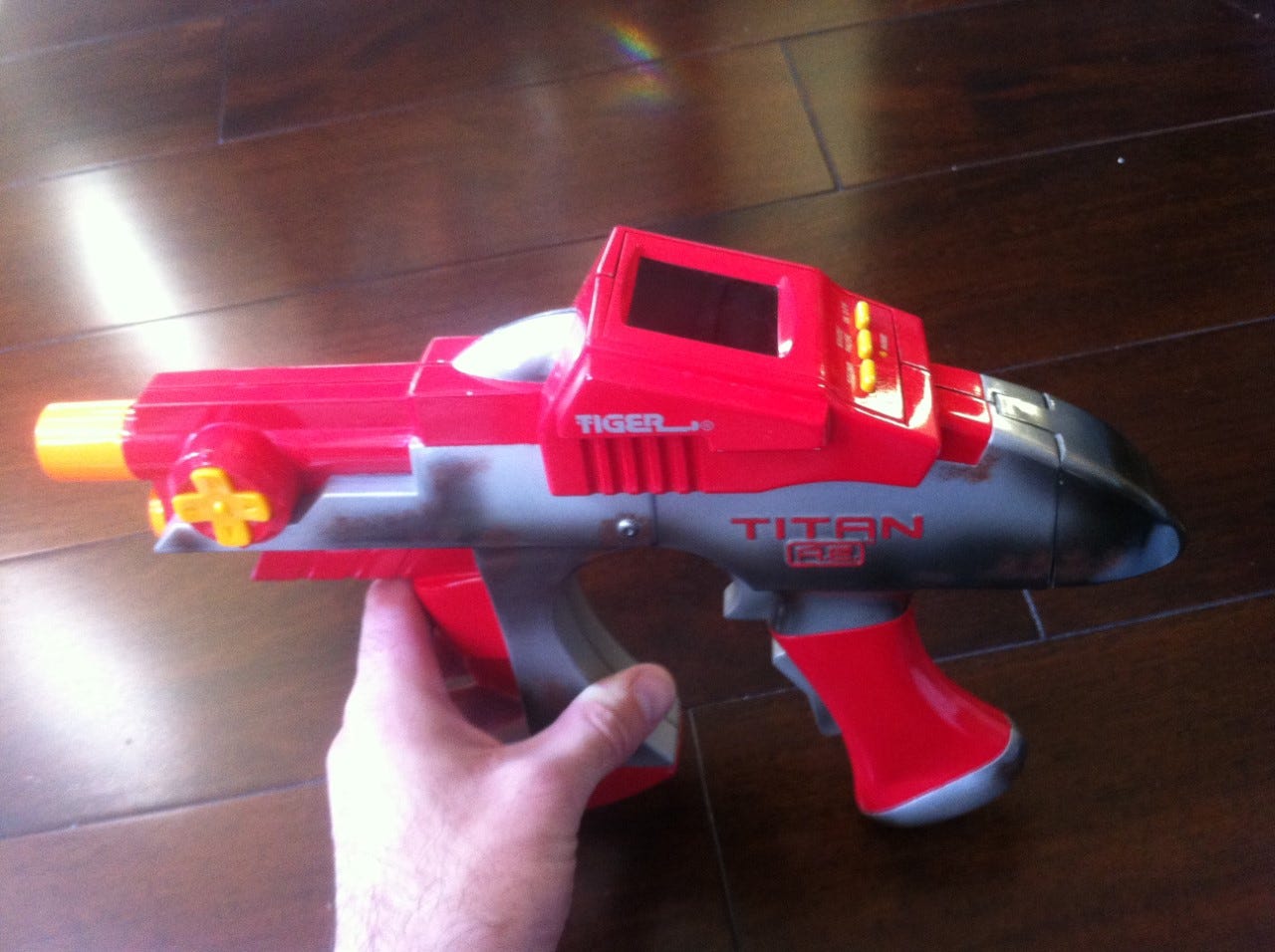
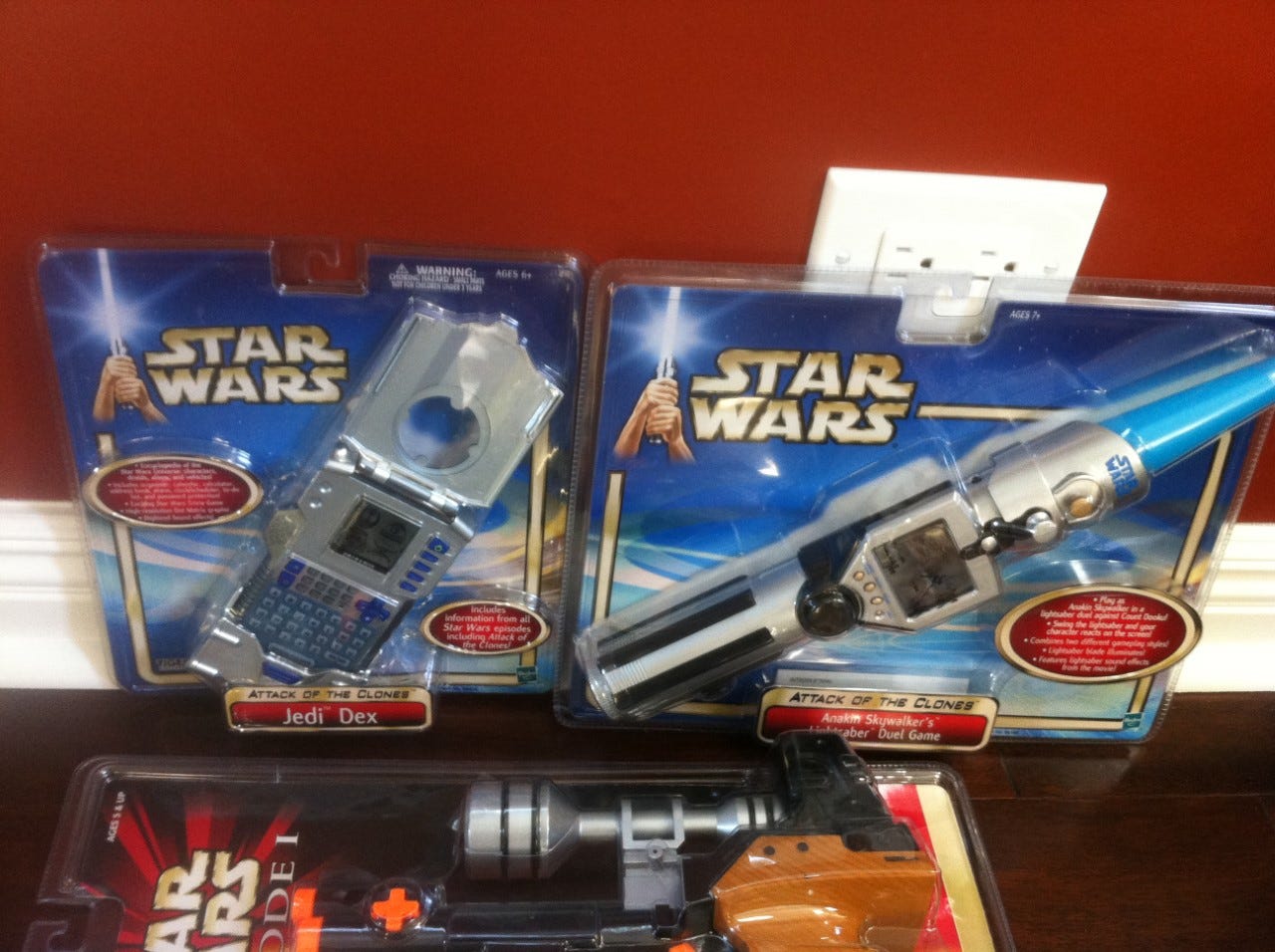
We would like to thank Chris for taking the time to speak to us here at the Johto Times, and share his experiences and cool stories from his time at Tiger Electronics/Hasbro Toys. We hope that it was interesting to our readers who may be familiar with some of the toys he worked on.
Interview conducted on March 10th 2023
Interview published on April 13th 2023


